Art & Literacy
Julia L. Hovanec is the Higher Education Division Director for PAEA and has taught art for more than thirty-four years to all age levels. Currently, she teaches Art Education at Kutztown University.
The seamless integration of literacy-based strategies into the art room makes perfect sense for all age levels. This Dynamic Duo can yield amazing results. I have been conducting research on this Commanding Combination for over twenty years. If done correctly, the Beautiful Blend affords students the opportunity to bridge connections between art and life. The literacy-based strategies become the bridge, facilitating the realization of the importance of the visual arts as well as brings to light the many natural connections that exist between art and literacy.
My research began when I volunteered to go into my son’s classroom to teach art. I created portable art lessons based on a picture book. Scranimals by Jack Prelutsky, Painting the Wind by Emily MacLachlan & When Pigasso Met Mootisse by Nina Laden, to name a few. The first time I read a book to his class, I became hooked on using picture books as hooks to introduce substantive visual art lessons. When I had my son’s class outside actually painting the wind, I remember thinking…this is pure magic. I quickly became known as the Book Lady, and I decided that I loved that title. I owned it. I entitled my collection of individual cases of books and lessons, BooksART (my mother came up with that title). Each case contained a picture book, a lesson plan, an example, and many other supplemental materials.
Since then, I have researched many other ways in which to integrate literacy into my own art classes, from elementary school to college. I still am a firm believer in the power of the picture book for all age levels. Yes, I read picture books to my college students. But that is just the tip of the iceberg. I decided to choose my top ten literacy-based strategies to share (I happen to love top ten lists). This was an especially tough list to write as I have employed numerous literacy-based strategies throughout the years. Here it goes…
1. Picture Books as Hooks – using favorite picture books to hook students into learning. Picture books are chockful of universal truths and understandings.
2. Ekphrasis – very simply put…poetically writing about art. It is a Greek word for the description of a work of art produced as a rhetorical exercise, an ekphrastic poem is a vivid, often dramatic, verbal description of a visual work of art.
3. Story Art – writing imaginative stories about works of art, considering what happened before or after or what is going on now. I also like when the students choose a portrait for the character, a landscape for the setting an abstract work of art for the conflict or plot.
4. List Poems – writing a list of everything they can think about that connects to a topic, theme, or work of art. It is an immediate poem. After curating the list and rearranging it, each word or phrase on the list becomes a line in the poem.
5. Word Wall – a collection of words displayed in large visible letters on a wall with pictures. The word wall in an art room can be designed to be an interactive tool for students. It could contain vocabulary used while creating art, talking about art, and reflecting on art. Word walls provide a permanently visible model for high-frequency words while offering students a reference and support when speaking about and writing about art.
6. Word Collage – Pat Mora wrote a poem entitled, Words Free as Confetti. That poem inspired this strategy. Simply, the students collect or wrangle words (check out Lexi the Word Wrangler by Rebecca Van Slyke and The Word Collector by Peter H. Reynolds that inspire them or have some sort of theme or some sort of meaning and then toss them onto a piece of paper like confetti and collage them into a work of art.
7. Picture Writing – based on Beth Olshansky’s work…students begin by creating a picture and then write in response to their art by describing what they see. This strategy treats words and pictures as equals. The picture the student creates inspires the words they write. They write with confidence.
8. Concrete Poetry – a form of poetry and an excellent literacy-based strategy in which poetry and visual arts come together one hundred percent. The poem is the art and the art’s the poem.
9. Artful Quotes – students artfully write their favorite into a work of art. The artful quotes can then be displayed, or they can be pulled together to create an inspirational book.
10. Reading Carpet – creating an ideal space in the art room is such a great idea. The carpet should be a space that is inviting, comfortable, and different from the rest of the room. It features an abundance of books, plenty of works of art, and a basket of artifacts. The space is perfect for individual learning, group learning, and teacher instruction. If a student finishes early or they need some time to think about a lesson before they begin, they can go to the carpet.
My hope is that these ten out of one-thousand and ten strategies spark your curiosity about the Dynamic Duo, Commendanding Combination, and Beautiful Blend of Art & Literacy. If you have any questions or would like more information, please feel free to contact me at hovanec@kutztown.edu.

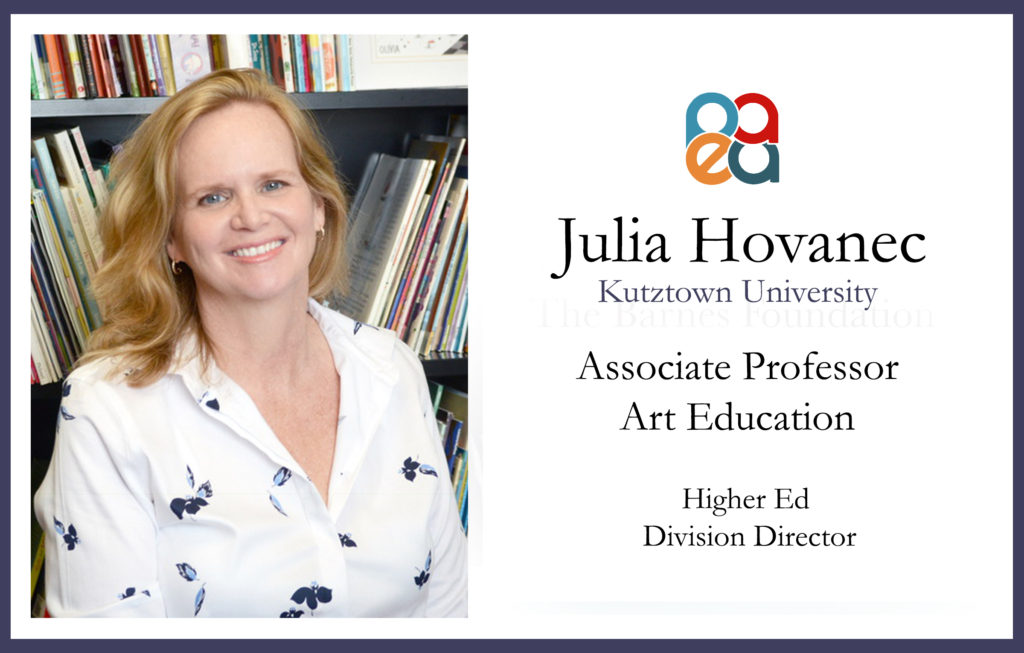
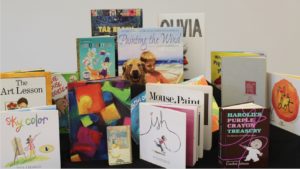
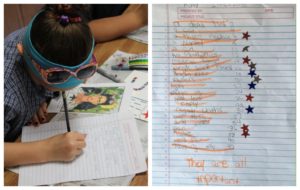
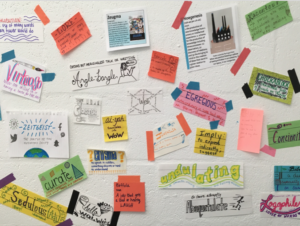
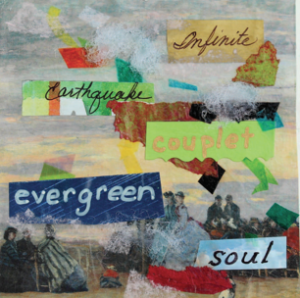
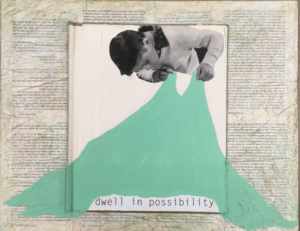
 D5 Creation
D5 Creation